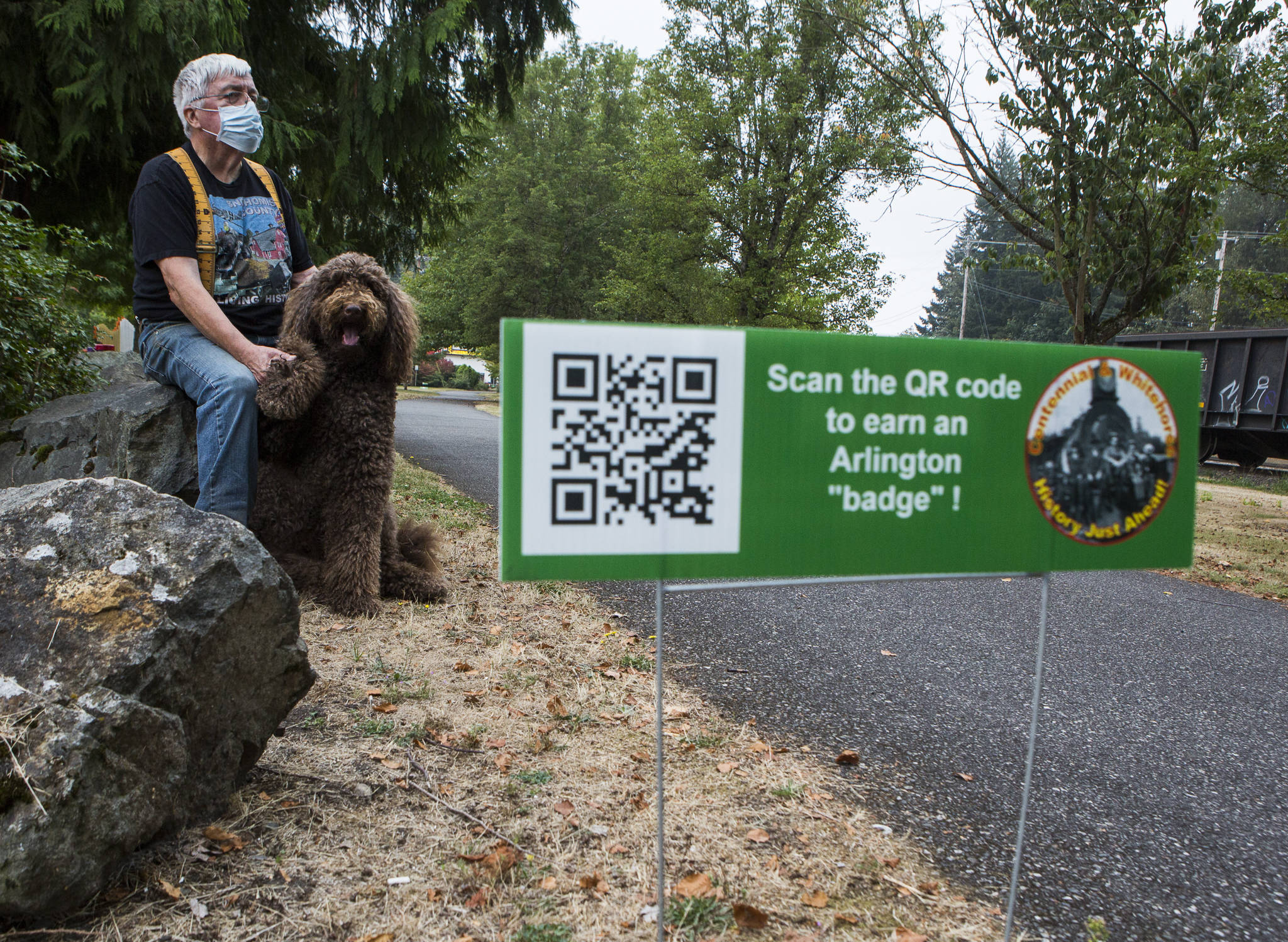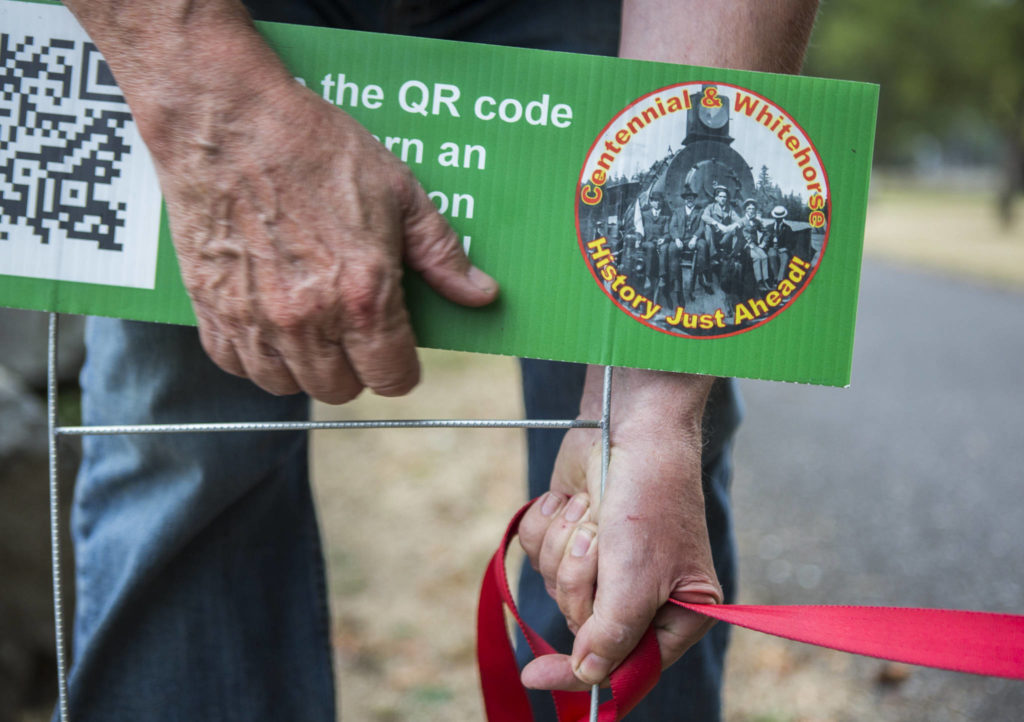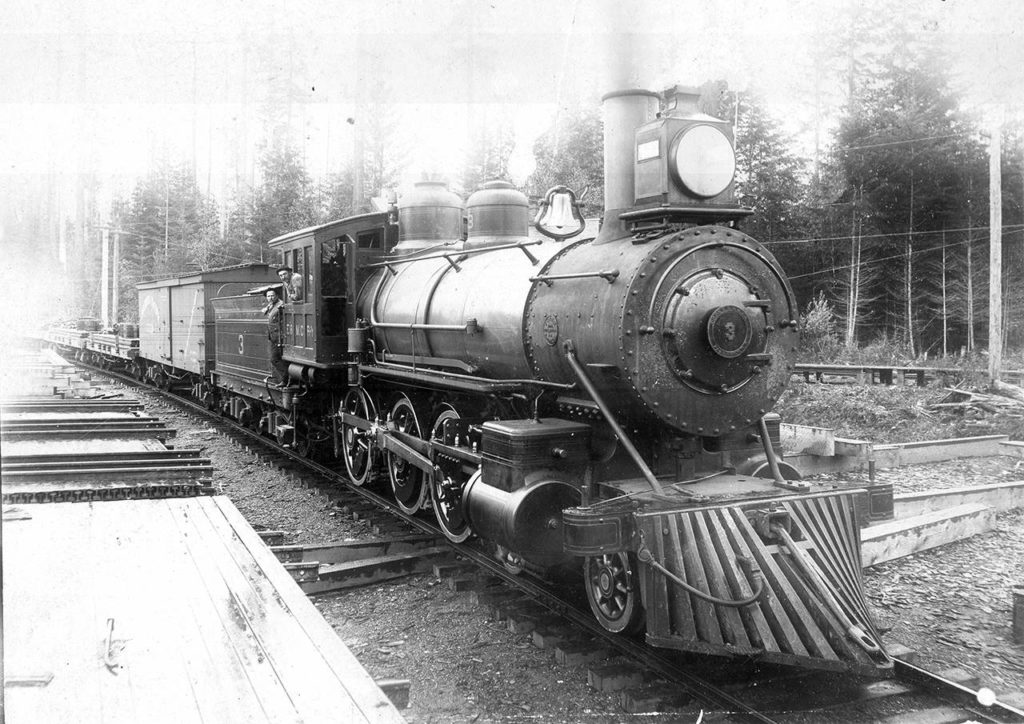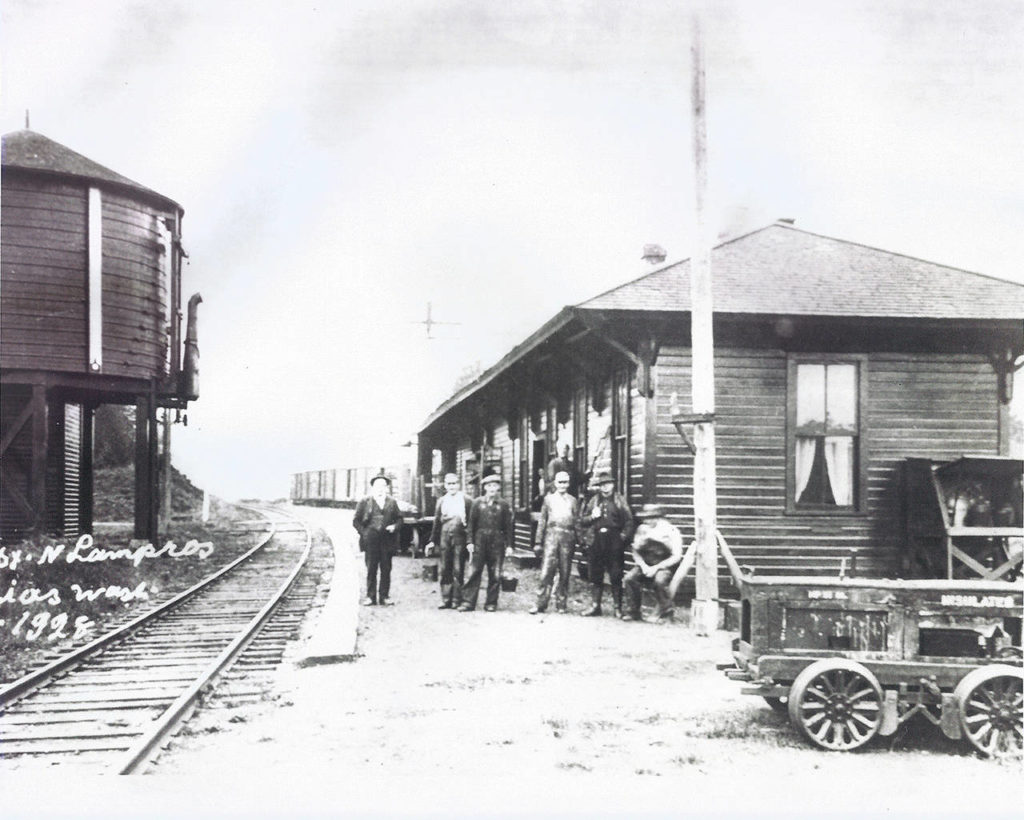ARLINGTON — History lures us to Centennial Trail. We’re reminded of the old-time railroad settlements that once flanked the 30-mile-long rail trail.
The trail, considered Snohomish County’s largest park, follows a former railway built in the late 19th century, linking Snohomish to Arlington. The trail opened in 1989 — the state’s centennial year — hence the name Centennial Trail.
This September, you’re invited to take a Centennial Trail history walk. Historical facts about the area’s settlements is posted on signs along the route. If you get 100% on the accompanying quiz, you’ll win a prize.
The event is a collaboration between the Snohomish County Historical Preservation Commission, Snohomish County and the Granite Falls Historical Society.
“I’ve been into Snohomish County history for a long time, and we cover everything along the Centennial Trail,” said Fred Cruger, a Historical Preservation commissioner. “It was a question of providing some facts that people probably didn’t know. The quiz reflects whether or not they were paying attention.”
Look for the green signs with a “History Just Ahead!” logo along Centennial Trail. Most of them can be found near trailheads or landmarks. As you walk along, you’ll see signs with a QR code to scan with your smartphone.
There are six sections with signs: one for Snohomish, Machias, Pilchuck, Arlington and Nakashima Farm, and another one for the railroad itself. In each section, four signs will offer historical facts and one sign will ask a question based on those facts.
Each time you answer a question correctly, you earn a virtual “badge.” (You get two chances to answer each question right.) Collect at least five badges, and turn them in to receive a “History Just Ahead!” button and a selection of historical photos.
“It’s fun to go out and do it,” said Tom Thorleifson, a member of the Granite Falls Historical Society. “When you’re out on the trail, you actually see the stuff and hear about the stuff that you’re standing by.” Along with the facts, audio files and historical photos pop up on your phone.
“It’s really cool to get people involved in history by getting them out, and it’s also cool to get people who are out and about involved with history.”
Here’s some history on each featured railroad settlement to help in luring you to the trail.
Machias
The town of Machias was established in 1890. It was named after Machias, Maine, the ancestral home of a first settler. Our county’s only newspaper at the time, The Snohomish Sun, thought the town was a threat to steal the status of county seat from Snohomish, but it didn’t.
In 1902, 11 men and women signed an agreement to build a church in Machias. The church was completed in 1905, modeled after the church in the other Machias, and still stands today.
In 1919, the entire business district of Machias burned to the ground. The general store, feed and grain store, livery stable, butcher shop, blacksmith shop, hotel, restaurant and several saloons were all destroyed.
The only building to survive downtown was the Northern Pacific Railroad depot, where today’s county trail building sits alongside the Centennial Trail.
Nakashima Farm
Kamezo and Miye Nakashima were among the earliest Japanese settlers to farm within Snohomish County. They bought the farmland in 1937. They eventually had about 70 cows, hand-milking about 40.
Their children attended school in Bryant and Pilchuck, and graduated from Arlington High School.
Then in 1942, the Nakashimas were forced to sell their dairy farm when the U.S. government ordered the internment of almost 120,000 American citizens of Japanese ancestry during World War II. The Nakashimas were sent to different internment camps.
An 89-acre park is what remains of the 1,200-acre Nakashima Farm. The barn is the only original building still standing.
Pilchuck
The town of Pilchuck established itself around the Parker Bell Lumber Co. mill in 1888. By 1910, it had a school, church, post office and multiple homes. It even had a hotel right next to the railroad tracks.
But when the mill closed in 1922, Pilchuck residents picked up and moved away. Sandwiched between today’s Highway 9 and the Centennial Trail, all that remains of Pilchuck is a bridge built in 1916. Locals know it as the Pilchuck Creek Bridge.
Arlington
Two towns, Haller City and Arlington, were platted only a quarter-mile apart, but when the Seattle, Lake Shore and Eastern railroad chose Arlington as the location for its depot, Arlington eventually absorbed Haller City. It was incorporated as a city in 1903.
You can find local history at the Arlington Municipal Airport, built in 1934, as well as at Pioneer Hall, built in 1923, which sits across the street from Centennial Trail, and the Stillaguamish Valley Pioneer Museum, with photographs and artifacts from Arlington and the Stilly Valley.
Nearby Pioneer Hall is a tree trunk measuring 20 feet in diameter, which had been chopped down to be entered into the 1900 World’s Fair. The tree was was not sent to Paris, however, and instead was set up behind the Olympic Hotel and used as a photographers gallery. In 1934, the tree was moved to its present location in Pioneer Park.
Snohomish
The first railroad in Snohomish was built by the Blackman Brothers to haul timber — but it didn’t leave the Snohomish area. The rails were wooden and spaced more than 6 feet apart, which was farther than standard.
The year 1888 marked the arrival of the Seattle Lake Shore & Eastern Railway. It was the first of several public railroads to service Snohomish. The Snohomish depot was located east of today’s Snohomish Public Library.
Before 1915, just north of the depot, were the fairgrounds for the Snohomish County Fair, adjacent to the tracks but now long gone.
The Snohomish County Historical Preservation Commission has hosted an event each summer along the Centennial Trail since 2017. Last year’s history walk featured displays by the Everett Museum of History, Everett Public Library’s Northwest Room, Granite Falls Historical Society, Sauk-Suiattle Tribe and the Edmonds Historical Museum.
Annually, these events bring the county’s museums to hundreds of visitors along the trail. But this year, because of COVID-19, the commission had to improvise. Instead of history and heritage displays, they devised the quiz.
“We took advantage of the fact that most people are carrying a smartphone with them,” Cruger said. “That’s what makes it a point-and-shoot operation.”
“It’s an idea that works perfectly for this unique situation that we’re in,” Thorleifson said. “If you’re stuck and home and you like history, go out on the trail. This is something to do.”
The Historical Preservation Commission plans to expand their history walks to the 27-mile-long Whitehorse Trail, which runs along a former railway between Arlington and Darrington.
Sara Bruestle: 425-339-3046; sbruestle@heraldnet.com; @sarabruestle.
If you go
Through September, the Snohomish County Historical Preservation Commission is hosting a Centennial Trail history walk featuring a quiz. You’ll need a smartphone to play the game. Scan the QR codes posted on signs along the 30-mile trail to read historical facts based on the area’s railroad settlements. The last code you scan will ask you about the history you just read. Earn a virtual “badge” each time you answer a question right. Earn at least five badges by Sept. 30 and win a prize. Email a screenshot of your badge collection to gretchen.kaehler@co.snohomish.wa.us.
Talk to us
> Give us your news tips.
> Send us a letter to the editor.
> More Herald contact information.





























